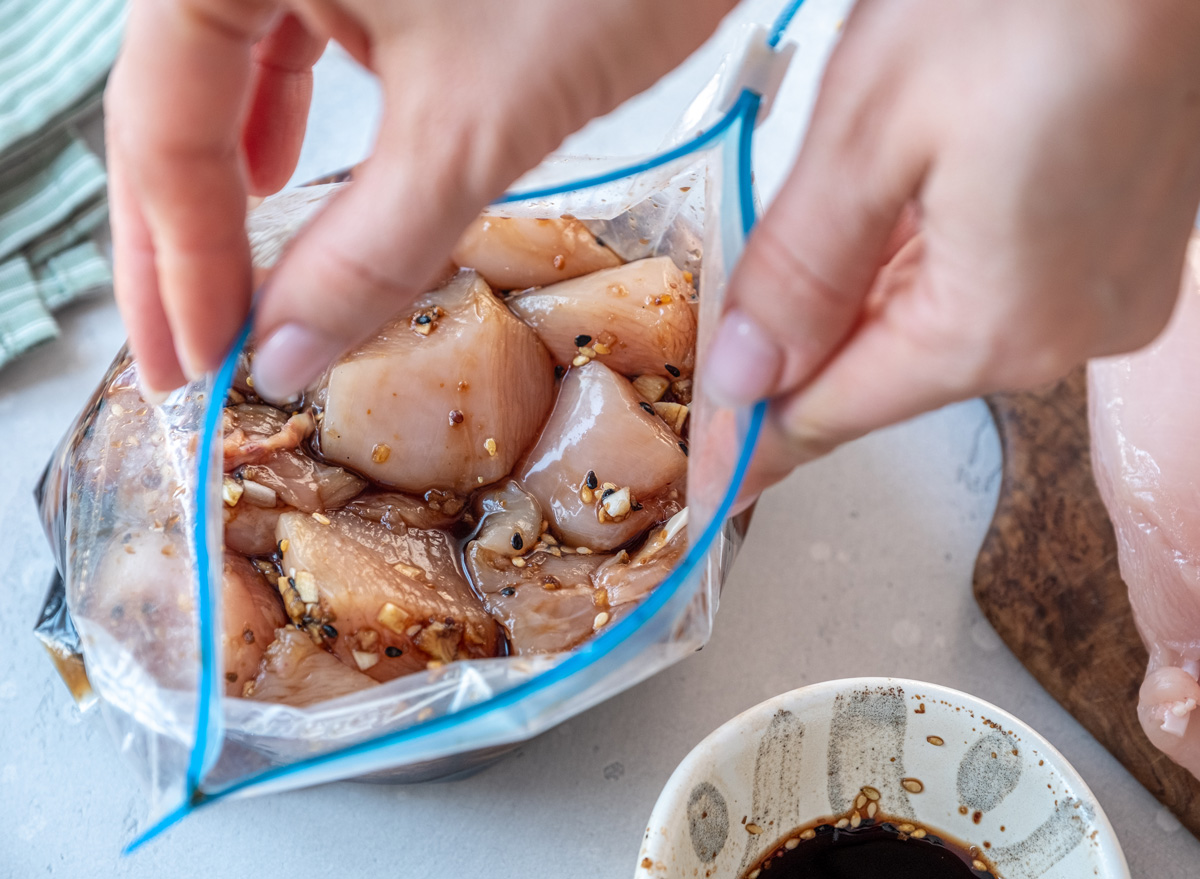Posted on September 24, 2021

When you buy your chicken at the store, ask yourself these questions: When did I purchase my chicken? How long ago was it purchased? What brand name do they sell? Are they fresh chickens or frozen ones? If you didn’t notice anything wrong while shopping for them, then chances are pretty high that they should be safe to consume. However, if any one of those factors looks off, then don’t worry too much about consuming the chicken just yet. There are other things that may indicate whether the chicken is going to taste fine. One way to test it out would be by slicing into the breast muscle and see how firm its texture is. Another thing you could try would be checking the juices in the cavity as well as inside the thigh. If they feel like something went sour, then you might want to toss the whole thing away. So basically, when buying chicken, always remember to pay close attention to all the details, so you won’t have to deal with wasting money on foods that aren’t edible anymore.
How to know if chicken is bad
If you have any doubts about whether your chicken is safe to eat, then don’t cook it. Instead, throw it in the trash immediately. However, before throwing away a whole cooked bird, take note of some signs which indicate that the chicken may be rotting inside as well as outside. If you notice these warning signs, do not consume them because they could make you sick. There are three major problems that arise after chickens get old or stored improperly. The first problem is the ammonia smell. This occurs due to decaying bacteria present on the skin, feathers, and other parts of the chicken. Not all birds produce foul odors but poultry should always be kept clean so that their odor does not waft into the air.
Foul smell
Your next step should be checking the odor level. A rotten egg smell is often associated with rotting food, so pay close attention to this part. However, keep in mind that some foods produce a strong smell even after they’ve been cooked properly. So don’t assume that just because something stinks, it’s definitely going bad! Onions especially tend to give their off-putting flavor whenever they’re cut up.
Gray spots
The first thing you should look at in your chicken is the color. If the skin looks dirty, then chances are it’s already contaminated by bacteria. This could mean that your meal was spoiled before you even started cooking it. In order to avoid such problems, make sure that all parts of your chicken have been cleaned thoroughly prior to cooking. You may also want to wash off any excess dirt on the outside of the bird as well.
Slippery meat
Another sign of spoilage is slippery meat, which indicates that the protein content inside the chicken has increased. When this happens, you need to start getting rid of the rest of the chicken immediately.
When did I buy the chicken?
Remembering exactly what day you purchased your chicken helps greatly in knowing whether it is safe or not to cook it. Most poultry stores sell chickens wrapped in plastic bags. Make sure that these bags haven’t become too old, though.
E-Coli
The second problem involves spoilage caused by E-Coli. The presence of E-Coli bacteria shows up as slime floating around the chicken’s insides. Other signs include visible pus and/or blood streaking through the flesh and darkening coloration. You must also check for mold growths on the carcass before eating. Mold usually forms within 24 hours after death. A final sign indicating spoilage is discoloration. Discolored meat is usually accompanied by off-flavors such as rotten eggs or sulfuric acid.
Know the parts
First off, it’s important to understand that chickens come in two basic parts: breasts and thighs. You also may see “leg quarters” on some butchers menus; these contain both thigh and drumstick portions. However, they don’t always sell them separately. When buying whole birds like this, look carefully at each part where possible, check weight per pound before purchasing, ask questions while shopping, make sure all pieces are trimmed properly, separate breast from skin side, etc.

